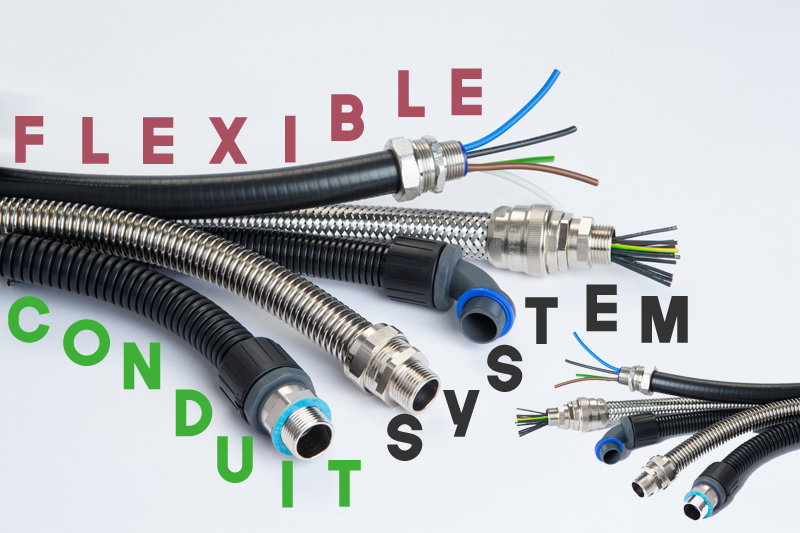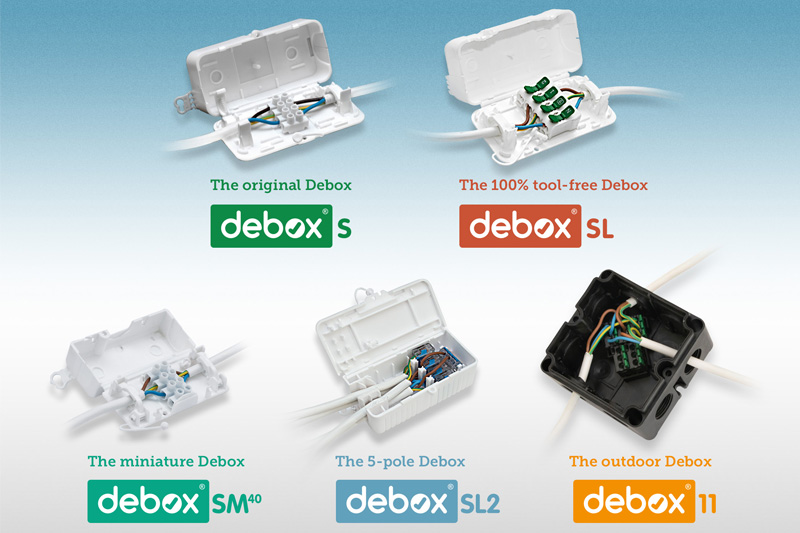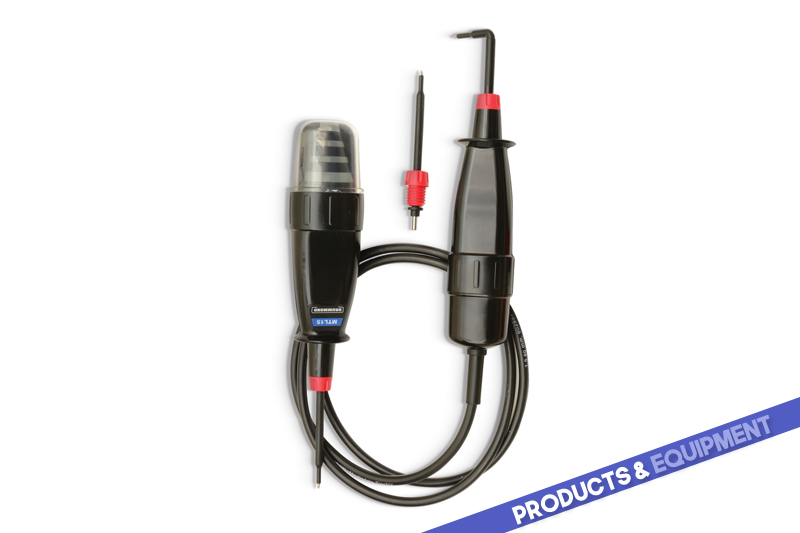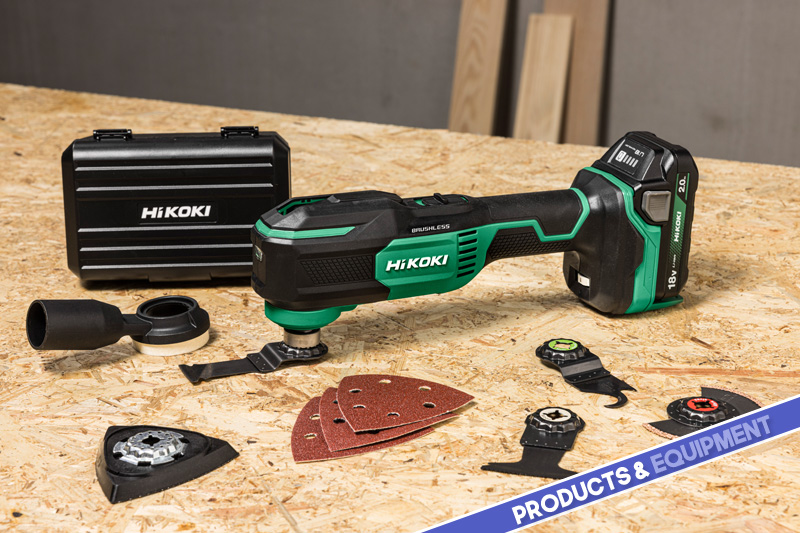Selecting the right flexible conduit system can be a tricky task. Rob Sprason, Technical Sales Manager from Atkore Flexicon outlines how to get it right.
The choice of which type of flexible conduit system to use for a particular application is an important one. It is vital that the solution you opt for not only protects all areas of the cabling but provides the appropriate levels of protection for its specific environment.
However, as every electrician knows, there is so much choice available that it can be a confusing decision. One of the biggest challenges for electrical installers and contractors is time. The requirement to move onto the next task quickly will often see electricians defaulting to products they know well and have used multiple times.
Although flexible conduit might look the same visually, with similar colours and profiles, material properties can differ significantly. There are numerous products available on the market, often for a lower cost than seemingly comparable alternatives. While it can be tempting to select based on previous installation experience or personal preference, this can be a false economy, so it is essential to verify all recommended performance criteria to avoid inadvertently reducing the level of safety and increasing risk.
So, what are some of the factors you need to consider—and how can you ensure that you get it right every time?
Ongoing development
Historically, conduits and conduit fittings were only available in metal, but, over time, the development of engineered plastics saw more flexible, corrosion and water-resistant solutions enter the market.
These solutions could withstand large temperature ranges, offered improved chemical and oil resistance, and enjoyed a high level of mechanical strength. As the market acceptance for these systems grew, so nylon (polyamide) became an increasingly important material. However, metallic and composite systems also remain in demand because of their excellent mechanical strength and EMC screening possibilities.
Get the specification right
Specifying cable protection based on one property alone can be a costly mistake and the full range of environmental factors should be considered. These can include exposure to extremes of temperature, UV radiation, harsh chemicals and the likelihood of water or dust ingress.
In addition, fire performance, compression strength and impact or abrasion resistance, risk of explosion or even the resistance to build up of bacteria could need to be considered.

Nylon, metal or composite?
Where fatigue life or impact resistance is important, installers should consider nylon polyamide (PA) corrugated flexible conduits, which can offer high impact strength and recovery if crushed, combined with excellent temperature performance.
Polypropylene and PVC conduit systems are available; however, both systems are inferior to nylon polyamide (PA) when it comes to fire performance, resistance to solvents and abrasion, as well as UV properties in external applications when exposed to the damaging effects of the sun.
With no exposed metallic content, non-metallic conduits do not rust or corrode when subjected to water, thus maintaining performance and appearance over time. In addition, it is worth considering labour and installation time. Non-metallic systems are often quicker to install than metallic options as they are easier and faster to cut. Non-metallic fittings will typically be one piece and simply push on and twist to secure. This makes them easier to handle as well as providing a lighter weight system.
For installations subject to increased UV exposure, it is important when specifying non-metallic and polymer-coated metal conduit to consider that ultraviolet (UV) radiation will naturally degrade any plastic materials. Failure could result in materials cracking, an increase in brittleness, reduced flexibility and lower impact strength, thus compromising the performance of the system or equipment.
Metallic flexible conduit typically has a higher level of crush resistance, high mechanical strength and can provide excellent EMC screening properties. Metallic systems are ideal for applications that require a very high compression or pull-off strength, or where there is the need to protect cables from exposure in hazardous environments. They also offer excellent performance for extremes of temperatures, both high and low – with uncoated options such as stainless steel offering a performance range from +600°C through to -100°C.
Composite products, such as plastic sheathing on metal conduits, metal over-braiding or metal threads on plastic fittings can also offer the ideal combination of light weight and high strength.
Retrofitting with ease
In existing applications, retrofitting cable protection has, traditionally, been a more complex task, with the installer required to pull existing cabling through the open end of a conduit system.
Conduit system manufacturers are therefore developing enhanced retrofit options to make it easier and quicker to install cable protection in existing applications, such as interlocking slit conduit. The construction allows existing cabling to be inserted laterally via a slit opening, enabling the installer to wrap a flexible conduit around the cables retrospectively with minimal disruption and without the cable being exposed.
This also has the added advantage of being able to protect pre-terminated cables with connectors or plugs, which are too big to pull through a conduit system.
It is also important to consider the cable routing. Traditional slit conduit options can potentially expose cabling when bent or routed around corners, with reduced mechanical strength, whereas newer options can maintain continuous protection of the cabling irrespective of orientation or routing.
Specify a complete system
The specification process should also take into consideration the range of fittings available, especially where these can help reduce installation time. Conventional fittings can take time to assemble and install, whereas newer designs feature innovations such as simple, one-piece push and twist conduit connection. These can offer significant time, simplicity and cost benefits, particularly where there are numerous cables to terminate.
Elsewhere, design improvements to help simplify cable management and routing over the lifetime of an installation are available. Junction boxes, such as Flexicon’s Connectabox, feature easy-to-connect entry points which can be used with non-metallic flexible conduit. These use push, twist and lock connectors to make a reliable connection in seconds, with the highest ingress protection of IP66, IP67, IP68 and IP69. This is without having to remove knockouts, drill holes, fit locknuts or even torque tighten any components.
In conclusion
When specifying the correct flexible conduit system, making the right choice is not merely a matter of convenience; it is essential for ensuring the reliability and efficiency of electrical installations. By embracing these principles, electricians can prioritise safety and performance and ensure the installation is fit for the future.
For more information, click here





